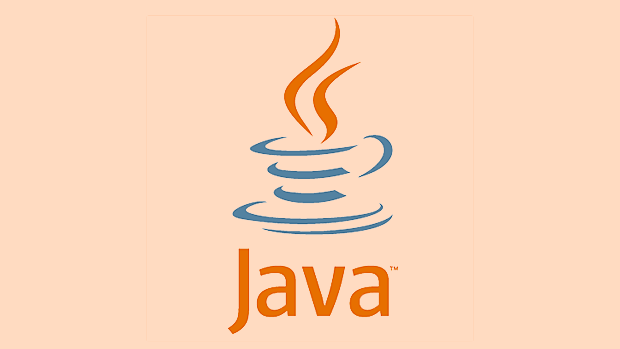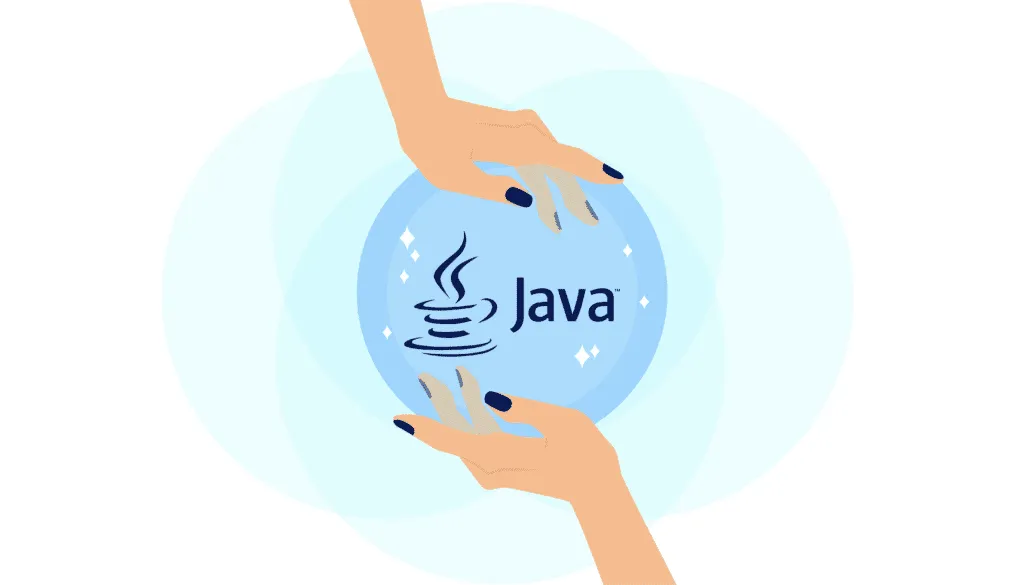Safe Casting and Type Compatibility in Java
Jul 08, 2025 am 01:54 AMThe key to the security of Java type conversion is to match the inheritance relationship and the actual object, and the upward transformation is automatic and safe; the downward transformation requires explicit and instanceof inspection; generics are unreliable due to type erasure; and the interface and implementation classes can be converted.

The Java type system is designed relatively strictly, with the purpose of discovering type errors as much as possible during the compilation period. However, in actual development, we still often need to do type conversion. At this time, "safe type conversion" and "type compatibility" have become issues that must be paid attention to.

This article directly talks about the key point: casting is safe only when two classes have an inheritance relationship and the actual object is an instance of the target type . Otherwise, ClassCastException will occur.

What is type compatibility?
Type compatibility in Java is mainly reflected in inheritance relationships. For example, an object of a subclass can be assigned to the reference variable of the parent class. This is called Upcasting , which is automatically completed and does not require casting.
For example:

Animal a = new Cat(); // Legal, Cat is a subclass of Animal
The other way around is not possible. If you try to assign the object of the parent class to the reference variable of the subclass, you must perform a cast, and the premise is that the object is indeed an instance of the subclass, otherwise an error will be reported at runtime.
Why does cast type conversion go wrong?
There is no problem with casting itself, the problem is that the type mismatch of the actual object . For example, the following code will throw an exception:
Animal a = new Animal(); Cat c = (Cat) a; // throws ClassCastException when running
Although the syntax here is correct, because a actually points to Animal object, not Cat , it fails to force it to Cat .
To avoid this problem, before making a downward transformation, you should first use instanceof to check the actual type of the object:
if (a instanceof Cat) {
Cat c = (Cat) a;
}This ensures the security of transformation.
Type erasure and generic conversion traps
Java generics are implemented through type erasing, which means that at runtime, the generic information will be "erased". For example, List<String> and List<Integer> are actually both List when running. This brings up a problem: you cannot directly make type judgments or conversions on generics.
For example, the following code will report an error:
List<String> list = new ArrayList<>();
if (list instanceof List<Integer>) { ... } // Compile errorBecause the type information no longer exists at runtime, this judgment cannot be completed. This also reminds us that when using generics, we should be extra careful about type conversion and avoid relying on runtime generic information.
Conversion of polymorphism and interface types
In addition to inheritance between classes, interfaces are also an important scenario for type conversion. If a class implements an interface, its objects can be assigned to the reference variable of the interface:
Animal a = new Cat(); // Class inheritance Runnable r = new Thread(); // Interface implementation
Similarly, if you want to transition from an interface reference variable to a concrete class, you also need to check if the types match:
if (r instanceof Thread) {
Thread t = (Thread) r;
}Such conversion is safe as long as the actual objects match.
Basically that's it. Type conversion is common in Java, but it is easy to make mistakes without paying attention to type compatibility and the real type of runtime objects. Remember a few key points:
- Upward transformation is automatically completed, safe
- Downward transformation must be explicit and must be coordinated with
instanceof - Generics are not reliable at runtime, don't rely on them to make type judgments
- Interfaces and implementation classes can also be converted, the logic is the same
Once you master these details, you will have a lot of thought when writing code.
The above is the detailed content of Safe Casting and Type Compatibility in Java. For more information, please follow other related articles on the PHP Chinese website!

Hot AI Tools

Undress AI Tool
Undress images for free

Undresser.AI Undress
AI-powered app for creating realistic nude photos

AI Clothes Remover
Online AI tool for removing clothes from photos.

Clothoff.io
AI clothes remover

Video Face Swap
Swap faces in any video effortlessly with our completely free AI face swap tool!

Hot Article

Hot Tools

Notepad++7.3.1
Easy-to-use and free code editor

SublimeText3 Chinese version
Chinese version, very easy to use

Zend Studio 13.0.1
Powerful PHP integrated development environment

Dreamweaver CS6
Visual web development tools

SublimeText3 Mac version
God-level code editing software (SublimeText3)

Hot Topics
 How to iterate over a Map in Java?
Jul 13, 2025 am 02:54 AM
How to iterate over a Map in Java?
Jul 13, 2025 am 02:54 AM
There are three common methods to traverse Map in Java: 1. Use entrySet to obtain keys and values at the same time, which is suitable for most scenarios; 2. Use keySet or values to traverse keys or values respectively; 3. Use Java8's forEach to simplify the code structure. entrySet returns a Set set containing all key-value pairs, and each loop gets the Map.Entry object, suitable for frequent access to keys and values; if only keys or values are required, you can call keySet() or values() respectively, or you can get the value through map.get(key) when traversing the keys; Java 8 can use forEach((key,value)->
 Java Optional example
Jul 12, 2025 am 02:55 AM
Java Optional example
Jul 12, 2025 am 02:55 AM
Optional can clearly express intentions and reduce code noise for null judgments. 1. Optional.ofNullable is a common way to deal with null objects. For example, when taking values ??from maps, orElse can be used to provide default values, so that the logic is clearer and concise; 2. Use chain calls maps to achieve nested values ??to safely avoid NPE, and automatically terminate if any link is null and return the default value; 3. Filter can be used for conditional filtering, and subsequent operations will continue to be performed only if the conditions are met, otherwise it will jump directly to orElse, which is suitable for lightweight business judgment; 4. It is not recommended to overuse Optional, such as basic types or simple logic, which will increase complexity, and some scenarios will directly return to nu.
 How to fix java.io.NotSerializableException?
Jul 12, 2025 am 03:07 AM
How to fix java.io.NotSerializableException?
Jul 12, 2025 am 03:07 AM
The core workaround for encountering java.io.NotSerializableException is to ensure that all classes that need to be serialized implement the Serializable interface and check the serialization support of nested objects. 1. Add implementsSerializable to the main class; 2. Ensure that the corresponding classes of custom fields in the class also implement Serializable; 3. Use transient to mark fields that do not need to be serialized; 4. Check the non-serialized types in collections or nested objects; 5. Check which class does not implement the interface; 6. Consider replacement design for classes that cannot be modified, such as saving key data or using serializable intermediate structures; 7. Consider modifying
 Comparable vs Comparator in Java
Jul 13, 2025 am 02:31 AM
Comparable vs Comparator in Java
Jul 13, 2025 am 02:31 AM
In Java, Comparable is used to define default sorting rules internally, and Comparator is used to define multiple sorting logic externally. 1.Comparable is an interface implemented by the class itself. It defines the natural order by rewriting the compareTo() method. It is suitable for classes with fixed and most commonly used sorting methods, such as String or Integer. 2. Comparator is an externally defined functional interface, implemented through the compare() method, suitable for situations where multiple sorting methods are required for the same class, the class source code cannot be modified, or the sorting logic is often changed. The difference between the two is that Comparable can only define a sorting logic and needs to modify the class itself, while Compar
 How to handle character encoding issues in Java?
Jul 13, 2025 am 02:46 AM
How to handle character encoding issues in Java?
Jul 13, 2025 am 02:46 AM
To deal with character encoding problems in Java, the key is to clearly specify the encoding used at each step. 1. Always specify encoding when reading and writing text, use InputStreamReader and OutputStreamWriter and pass in an explicit character set to avoid relying on system default encoding. 2. Make sure both ends are consistent when processing strings on the network boundary, set the correct Content-Type header and explicitly specify the encoding with the library. 3. Use String.getBytes() and newString(byte[]) with caution, and always manually specify StandardCharsets.UTF_8 to avoid data corruption caused by platform differences. In short, by
 How to parse JSON in Java?
Jul 11, 2025 am 02:18 AM
How to parse JSON in Java?
Jul 11, 2025 am 02:18 AM
There are three common ways to parse JSON in Java: use Jackson, Gson, or org.json. 1. Jackson is suitable for most projects, with good performance and comprehensive functions, and supports conversion and annotation mapping between objects and JSON strings; 2. Gson is more suitable for Android projects or lightweight needs, and is simple to use but slightly inferior in handling complex structures and high-performance scenarios; 3.org.json is suitable for simple tasks or small scripts, and is not recommended for large projects because of its lack of flexibility and type safety. The choice should be decided based on actual needs.
 Java method references explained
Jul 12, 2025 am 02:59 AM
Java method references explained
Jul 12, 2025 am 02:59 AM
Method reference is a way to simplify the writing of Lambda expressions in Java, making the code more concise. It is not a new syntax, but a shortcut to Lambda expressions introduced by Java 8, suitable for the context of functional interfaces. The core is to use existing methods directly as implementations of functional interfaces. For example, System.out::println is equivalent to s->System.out.println(s). There are four main forms of method reference: 1. Static method reference (ClassName::staticMethodName); 2. Instance method reference (binding to a specific object, instance::methodName); 3.
 Outlook shortcut for new email
Jul 11, 2025 am 03:25 AM
Outlook shortcut for new email
Jul 11, 2025 am 03:25 AM
How to quickly create new emails in Outlook is as follows: 1. The desktop version uses the shortcut key Ctrl Shift M to directly pop up a new email window; 2. The web version can create new emails in one-click by creating a bookmark containing JavaScript (such as javascript:document.querySelector("divrole='button'").click()); 3. Use browser plug-ins (such as Vimium, CrxMouseGestures) to trigger the "New Mail" button; 4. Windows users can also select "New Mail" by right-clicking the Outlook icon of the taskbar






